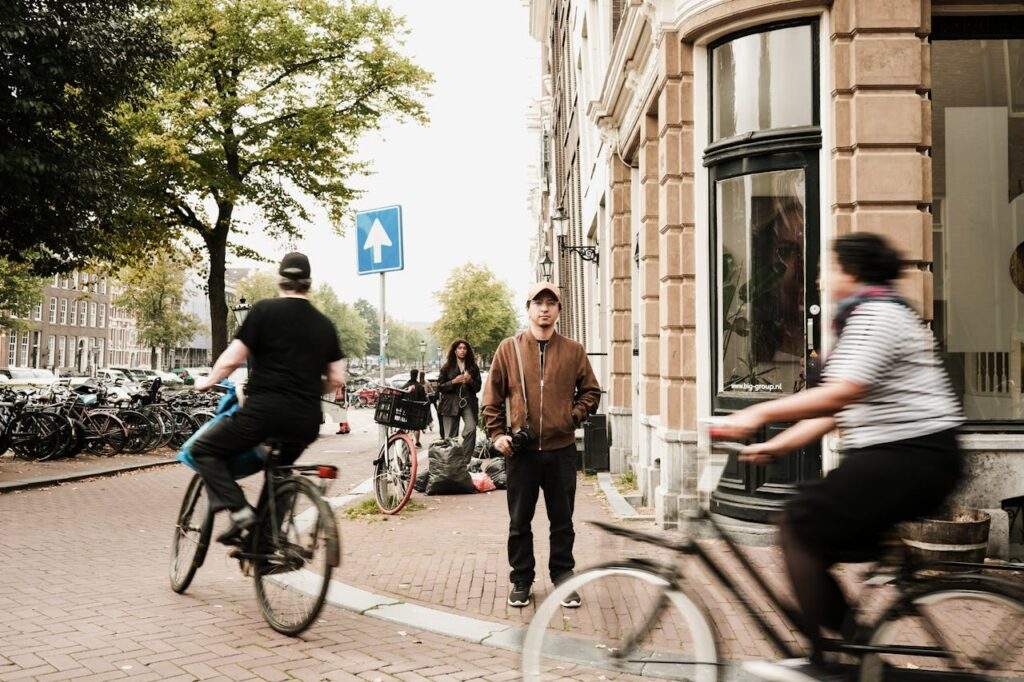
Adopting a car-free lifestyle is an appealing choice for many today. It offers benefits like reduced expenses, a lower carbon footprint, and a healthier daily routine. Living without a car also encourages more active forms of transportation and provides a new perspective on your city. To make this shift successful, practical tips are essential to keep your routines on track and make life without a personal vehicle manageable and enjoyable. This applies to whether you’re looking to handle your day-to-day commute or for a specific task, like moving from Florida to Oregon.
Assess Your Current Transportation Needs
Starting this shift requires understanding your daily routines and essential routes. For example, if your job, school, or frequently visited places are far from home, identify alternative ways to reach them efficiently. Mapping out these regular routes helps to reveal which options are available, whether public transit, biking, walking, or a mix of methods. If you find that some trips are simply too far to manage without a car, consider options like ridesharing or short-term rentals for occasional needs.
Listing and analyzing essential trips helps determine what types of transportation are most practical for your routines. If grocery shopping is a regular task, look into nearby grocery stores or explore delivery options. Not every aspect of car-free living has to involve a major shift—sometimes, small tweaks like adjusting your shopping day to coincide with a convenient transit route can make all the difference. This preparation helps ensure that once you go car-free, you aren’t left scrambling for alternatives on busy days.
Explore Public Transit Options for a Car-Free Lifestyle
Public transit is central to a car-free lifestyle in most urban areas. Understanding the local bus, subway, or train schedules will help you navigate more easily. Transit apps can be valuable tools for real-time updates on schedules, routes, and delays. Many public transportation systems offer discounts through monthly or annual passes, which can save a lot compared to single-ride fares.
Secondly, another practical aspect is timing. Commuting outside of peak hours whenever possible can save time and offer a more comfortable experience. If you’re unfamiliar with transit, try mapping out a few trial routes to your most important destinations. This will help you identify the most convenient and efficient options. Public transit can quickly become second nature, making it a reliable mainstay in your car-free routine.

Embrace Active Transportation: Walking and Biking
Walking and biking are fantastic ways to cover shorter distances while staying active and connecting with your surroundings. For those new to biking, investing in a sturdy, reliable bicycle and essential gear, like a helmet, can make the experience safer and more enjoyable. In cities with bike-sharing programs, try these out before purchasing a bike, especially if you’re unsure how often you’ll use one.
Above all, bike safety should always be a priority, so it’s helpful to look up local laws, understand where you’re allowed to ride and practice good habits like using lights and securing your bike with a durable lock. If you live in an area with biking infrastructure, try different routes to avoid busy streets. Additionally, walking can be an excellent way to cover shorter distances and even relax. Good walking shoes and a backpack or tote bag help make walking to shops or errands more convenient.
In addition, joining local biking or walking groups can also provide added support, tips, and insights. It’s common to find walking or cycling groups that focus on specific neighborhoods or areas of the city. These groups can help you discover new, safer, and more scenic routes for getting around without a car.

Plan for Occasional Car Needs
Even the most dedicated advocates of a car-free life may need a vehicle sometimes. Car-sharing services, rentals, or ride-hailing apps can help fill the gaps when you have destinations or needs that public transit or biking can’t meet. While a car-free life minimizes many of the hassles of vehicle ownership, occasional rentals allow you to travel more comfortably and are usually more cost-effective than car ownership.
For starters, budgeting for periodic rentals and planning ahead for events or tasks that require a car can make your lifestyle smoother and more sustainable. Carpooling is another option, especially when you have friends or neighbors with similar destinations. Many people find that they don’t need a car for everyday tasks but enjoy access to one for weekend trips, moving bulky items, or going on out-of-town excursions. These limited and planned uses of a vehicle make things more flexible and accessible without the commitment of owning a car.
Likewise, when planning a move across the country, such as relocating from Florida to Oregon, hiring professional movers can simplify the process. Long-distance moves come with logistical challenges, especially without a personal vehicle. Movers can handle transporting heavy furniture and belongings while you focus on adjusting to your new environment. A long-distance move can be challenging, but with professional support, you can avoid the stress of coordinating everything on your own, allowing for a smoother start in a new place.
Adjust Your Mindset and Daily Routines
Moving away from a car-centered routine can feel like a lifestyle change, but it can also make daily life more satisfying. Instead of rushing from place to place, enjoy the slower pace that comes with public transit, walking, and biking. These more intentional forms of travel allow you to experience the city in new ways and often help build a stronger connection to local neighborhoods and the people around you.
With a focus on routines, a car-free lifestyle can offer an opportunity to develop fresh daily habits. For example, walking to a nearby café in the morning, carrying a reusable cup, or riding your bike to a farmer’s market on weekends can become enjoyable parts of your week. Small rituals help ease into a new routine and make each day feel more productive and purposeful. Also, these alternatives often incorporate more exercise, which boosts overall well-being and makes your lifestyle healthier.
It’s natural to face some initial adjustments when adopting a car-free life. While it may feel restrictive at first, over time, many find that their day-to-day activities actually expand without the cost and constraints of car ownership. In urban areas, cars can sometimes add more stress than convenience. By committing to alternatives and planning thoughtfully, a car-free life can offer more balance and fulfillment.

Wrap-Up
Adopting a car-free lifestyle is a meaningful way to simplify life, cut down on expenses, and contribute to a cleaner environment. While it may seem like a significant change at first, these practical tips help make it accessible and enjoyable. With preparation and a few adjustments to your routines, life without a car can be manageable, rewarding, and enriching.
